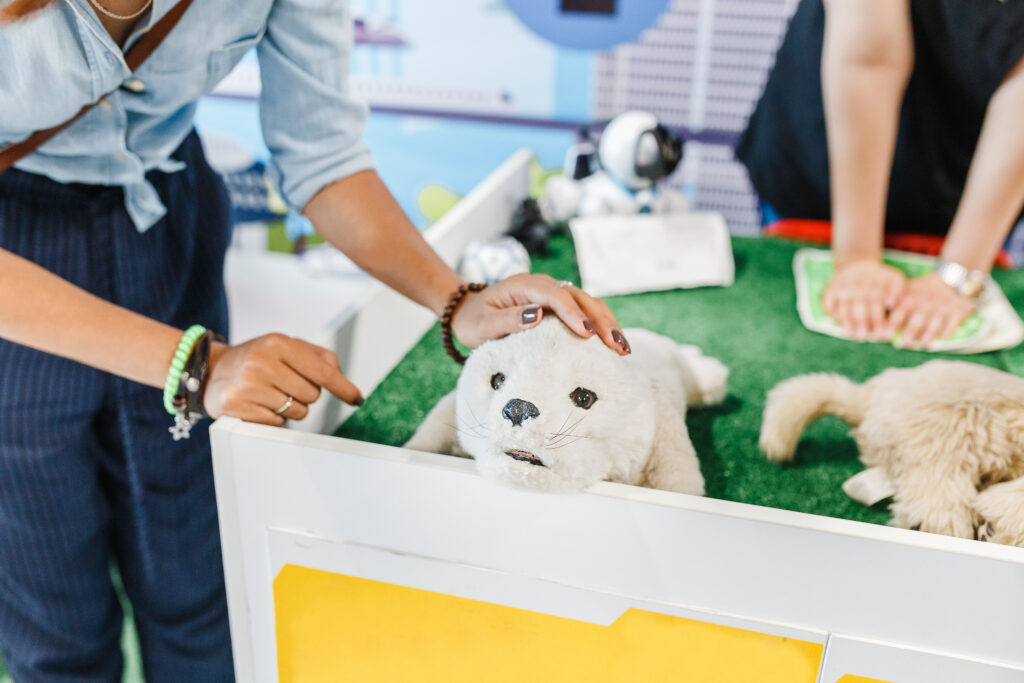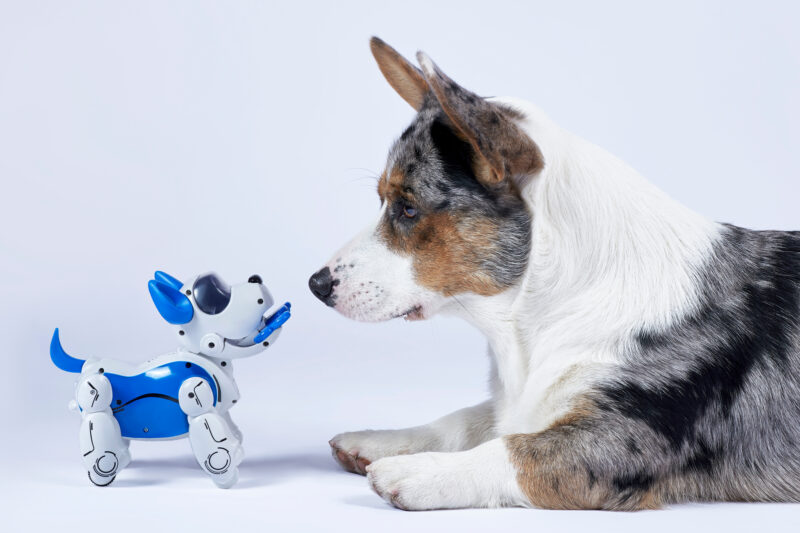My father’s friend Dottie, a single widowed lady of 95, loves her robotic cat Sheena. (Indeed, when my father and I visited her in the assisted-living facility where she lives, I loved cuddling up with the kitty too). Even better, during Covid, when Dottie couldn’t leave her room or invite family members or friends to visit, Sheena saved her from loneliness.
Dottie is not alone. Programmed cats and dogs provide a sense of companionship and comfort to many of the elderly, especially to those living with dementia or Alzheimer’s, where petting robotic animals can help with recalling memories. A New Zealand study found that the seniors who interacted with robotic pets were more cheerful, handled stress better, improved their socialization, and reduced depression and social isolation. The latter is particularly noteworthy, as loneliness is a huge problem for middle-aged and older adults. A 2018 AARP survey found that about 1/3 of adults over 45 are lonely.

Therapeutic value of robot pets
In pre-Covid times, trained and certified therapy dogs visited hospitals and nursing homes, along with their owners or handlers, to entertain and emotionally support patients and residents. But the good news about companion animals is that they can stay in a person’s room long after a trained therapy dog and its owner have left.
Although many people have never heard of them, companion robots have been on the market for years. Sony introduced the first consumer model, Aibo (which means “pal” or “partner” in Japanese) robot dog, in 1999. The latest reboot comes with Internet connectivity and facial recognition.
Robotic pets range from as low as $37 to $130 and can be purchased online through retailers like Amazon or at pharmacies like CVS. Unlike a traditional stuffed animal, they are interactive—they have a heartbeat, make sounds, and respond to human touch and voice. In an article in Wired, Ted Fischer, co-founder and CEO of Ageless Innovation said, “The two-way interaction helps create a personally rich experience that can bring fun, joy, and friendship to older adults. Fischer added that many people name their robotic dogs and form attachments to them. “Some people treat the dogs as though they are real puppies; others understand them to be robotic stuffed animals. Either way, they seem to benefit from their companionship.”
Long term value
And since robot pets don’t need walks, food or expensive vet visits, they’re a low-maintenance, affordable option for people who are no longer able to care for a pet.
Home Care, a business magazine for home health professionals, reported that the company Alacare Home Health & Hospice developed a project that would allow them to investigate the effects of robotic pets on their patients. Seven seniors were given a pet and studied for their reactions. The patient’s caregivers and family members participated in the study as well, to discuss how having a pet affected their loved one.
In six out of seven cases, the patient’s interactions with the robotic companion pet reduced anxiety and increased communication skills. In four of the six, the older adult was suffering from dementia, Alzheimer’s, Parkinson’s disease, hypertension, renal disease, and/or congestive heart failure.
Significantly, the data not only showed that social isolation decreased, but that less medication and costly treatments were required, because the robotic pet reduced anxiety.
Robot pets and caregivers
Caregivers also expressed benefits. Patients with dementia, for example, who had not been communicating before owning a robotic pet, began to do so with the animal then became willing to speak to their family members and caregivers. As the article observed, watching a loved one who has not been able to communicate, begin to open up, is enormously moving.
While the results of the study were almost all positive, it also revealed some challenges. An Alzheimer’s patient initially responded with great affection towards her pet but later began to worry about her ability to care for it, mistaking it for a real animal. And some seniors needed more time to bond with their new pet before being left alone with it.
Most of these challenges can be overcome, though. When I remember how Dottie’s face radiated with tender kindness as she held Sheena in her arms, I can’t help but think this is a glowing example of the good that technology can bring to our lives.

